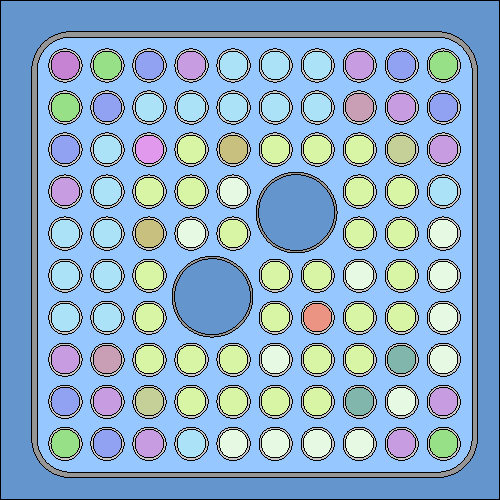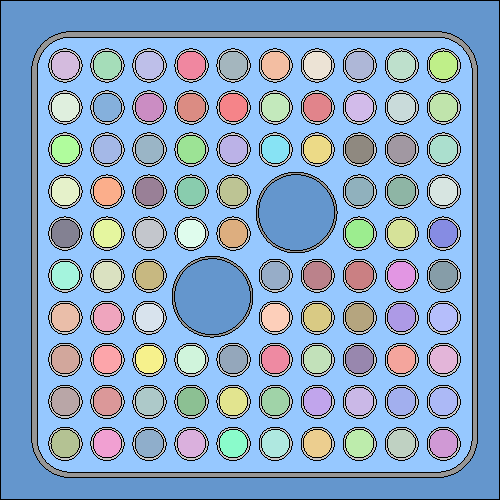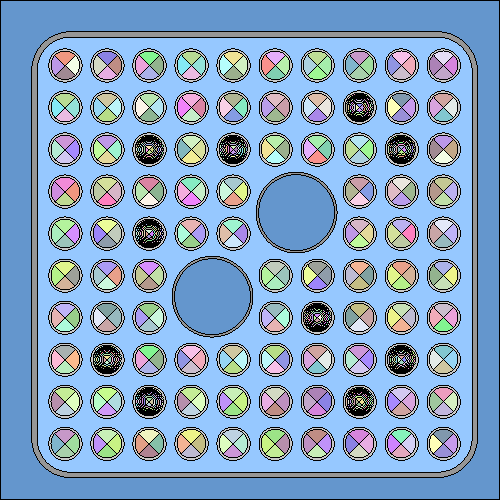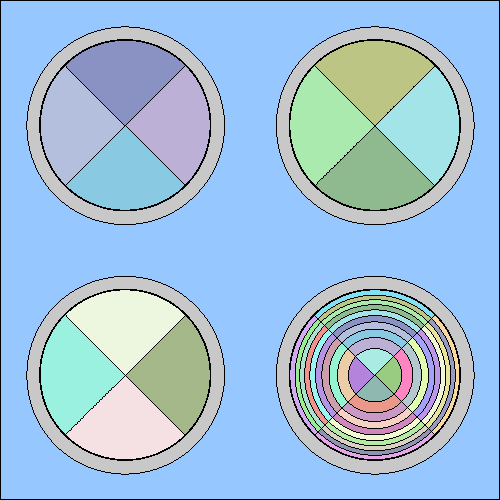Automated depletion zone division
Serpent 2 has the capability to perform automated depletion zone division for materials in burnup calculation. There are two options:
- The number of radial regions in 2D pin-type objects can be entered directly in the material card ("Serpent 1" type division).
- The div card can be used to perform 3D depletion zone division.
Both approaches are discussed below. With automated depletion zone division it important to always check the volumes using the Monte Carlo based volume checker routine, and if necessary, define the volumes manually.
Contents
Division with material card
Division with divisor card
The div card can be used to separate each cell into its own depletion zone, and further sub-divide pin-type objects into axial-, radial and angular sub-zones. The division takes into account the universe-based geometry structure, so the same cell in two different univeses is treated as two separate cells. For fuel assembly geometries, for example, each pin can be treated as a separate material. If the assembly is put in a core lattice, the same pin in two different assembly positions can be treated separately and so on.
The basic methodology is best illustrated by an example involving a BWR fuel assembly geometry consisting of a 10 x 10 lattice of fuel pins with 13 different fuel types (fuel1, fuel2, ... fuel13):
Simple cell-based division
Defining a div-card for each fuel composition:
div fuel1 sep 1 div fuel2 sep 1 ... div fuel13 sep 1
divides identical compositions into different depletion zones:
Some of the colors in the plot may appear similar, but each regions now contains a different material. The value after the sep-entry defines the geometry level at which the division is performed. Value 1 refers to the last level, which essentially means that all cells in the geometry are handled separately. The use of the sep entry is revisited at the end of this example.
Radial, axial and angular sub-division
If it is assumed that fuel types 9-13 contain burnable absorber,
so let's divide them into 10 rings: div fuel9 sep 1 subr 10 0.0 4.38E-01 div fuel10 sep 1 subr 10 0.0 4.38E-01 div fuel11 sep 1 subr 10 0.0 4.38E-01 div fuel12 sep 1 subr 10 0.0 4.38E-01 div fuel13 sep 1 subr 10 0.0 4.38E-01
The division is made between 0 and 0.438 cm into 10 rings with equal cross-sectional area:
Finally let's divide every pin into 4 angular sectors:
div fuel1 sep 1 subs 4 45.0 div fuel2 sep 1 subs 4 45.0 ... div fuel13 sep 1 subr 10 0.0 4.38E-01 subs 4 45.0
The angular segments are tilted by 45 degrees:
Here's a closer view of 4 divided pins:
The axial division works in a similar manner. The code should be able to calculate material volumes correctly for this type of geometries. The division can be used with any configuration, but if the volumes cannot be calculated for the original cells, they cannot be calculated for divisions either.




